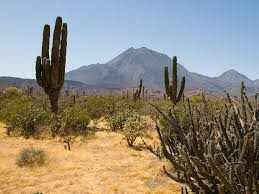Team members
Names / Roles:
- Felix koh (Leader)
- Zaid (Wiki Writer)
- Jia Xiang (Researcher)
- Zhafir (Researcher)
- Wang Bin (Researcher)
Overview
In this section, include a brief description of the allocated ecosystem. You should include the following information:
- Location of the ecosystem
- The Desert
- Description of ecosystem
- The Desert is a dry terrain.It do not have much vegetation as there are very little found in the desert.The Desert supports very little life.
- Biodiversity of ecosystem (richness of life in ecosystem)
- Although deserts are frequently thought of as barren environments, there are actually a wide variety and abundance of plant and animal species adapted to live in them.Hundreds of cacti had specialized in storing water in them to survive in the harsh environment of the desert. Many mammals which lives in the desert have also adapted to the surrounding which is by dispersing its body heat faster.
Physical Factors
Search the Internet for information on the following physical factors in the allocated ecosystem.
- Light (availability of sunlight in the ecosystem),
- There are lots of sunlight availability. Making the temperature higher and having lesser water available.
- Temperature (temperature of the ecosystem),
- The extreme maximum temperature for Hot Desert ranges from 43.5 to 49° C. Cold Deserts temperature in winter ranges from -2 to 4° C and in the summer 21 to 26° C a year.
- Water (water quality in the ecosystem),
- There are not much water available in the desert as it is a very hot place and humid. But there are cacti in the desert to provide some water.
- Salinity (freshwater or seawater found in the ecosystem).
- There are no freshwater or seawater found in the ecosystem as the temperature is high.
- Air (quality of air in the ecosystem),
- The air is very bad as there are no trees in the deserts making the air quality bad.
- pH of the environment (how acidic or alkaline the ecosystem is),
- The desert is more alkaline than acidic.
- mineral salts (availability of nutrients and mineral salts in the ecosystem)
- There are no nutrients and mineral salts in the desert as the land is barren. Therefore, no plants can survive in the desert.

Classification of Living Organisms
Classify at least eight of the living organisms found in the allocated ecosystem into the categories below:
1. Producers

Cacti
Cacti are usually found at dry places such as the desert. Cacti are natives to the America.
2. Primary Consumers

Camels
Camels are usually found in drought places. They can store a large amount of water in the two humps it has to last very long in hot areas such as the desert.
3. Secondary Consumers

Coyote
The Coyote comes from places such as the desert. It feeds from a range of animals from big to small such as Voles, Birds, Snakes, Mice, Deers, Prairie Dogs Etc. Its Binomial Name is called the Canis Latrans.
4. Tertiary Consumers

Eagle
Eagles can be found in the United States, Mexico, Australia Etc. Eagles eats almost everything such as snakes, foxes, birds.
5. Decomposers

Dung Beetle
The Dung Beetle can be found in deserts, farmlands, forest and grasslands. It mostly feeds on feces. It only eats dung and nothing else.
Food Web
Create a food web using at least eight of the living organisms listed above. You may wish to use Microsoft PowerPoint to create your food web. Save your food web as a picture. Finally copy and paste your picture in this section of your wiki.

Interrelationship in Ecosystem
Give at least one example for each of the following relationships in the ecosystem:
- Predator-prey relationship
The predator find its prey and eats it. Predation is used here to include all "+/-" interactions in which one organism consumes all or part of another. This includes predator-prey, herbivore-plant, and parasite-host interactions. These linkages are the prime movers of energy through food chains. They are an important factor in the ecology of populations, determining mortality of prey and birth of new predators. Predation is an important evolutionary force: natural selection favors more effective predators and more evasive prey. "Arms races" have been recorded in some snails, which over time become more heavily armored prey, and their predators, crabs, which over time develop more massive claws with greater crushing power. Predation is widespread and easy to observe. Neither its existence nor its importance is in doubt.

(Lion with zebra)
- Parasitism
Parasitism is a non-mutual relationship between organisms of different species where one organism, the parasite, benefits at the expense of the other, the host. Traditionally parasite referred to organisms with lifestages that needed more than one host

(Mosquito and human)
- Mutualism
Mutualism plays a key part in ecology. For example, mutualistic interactions are vital for terrestrial ecosystem function as more than 48% of land plants rely on mycorrhizal relationships with fungi to provide them with inorganic compounds and trace elements. In addition, mutualism is thought to have driven the evolution of much of the biological diversity we see, such as flower forms (important for pollinationmutualisms) and co-evolution between groups of species. However mutualism has historically received less attention than other interactions such as predation and parasitism.

(Crocodile and its young)
Useful Links
Plagarism is a strongly discouraged.
Include the links of all websites you obtained information from to complete your ecology wiki.
For example:
Wild World @ nationalgeographic.com ( http://www.nationalgeographic.com/wildworld/terrestrial.html )
Comments (3)
2013class1e1group3 said
at 7:03 pm on Mar 25, 2013
i just cannot add the pics anyone can help?
Mr Reuben Ng said
at 10:26 pm on Mar 26, 2013
Do you still need help? Your food web is good! However, I expected a named example on the inter-relationships. What are those animals in these picture?
2013class1e1group3 said
at 10:51 am on Mar 30, 2013
Yes please.
You don't have permission to comment on this page.